Nasolabial Folds
Nasolabial folds are lines from the nose to the mouth that show aging with sagging skin. Deeper folds may make you look tired or distant.
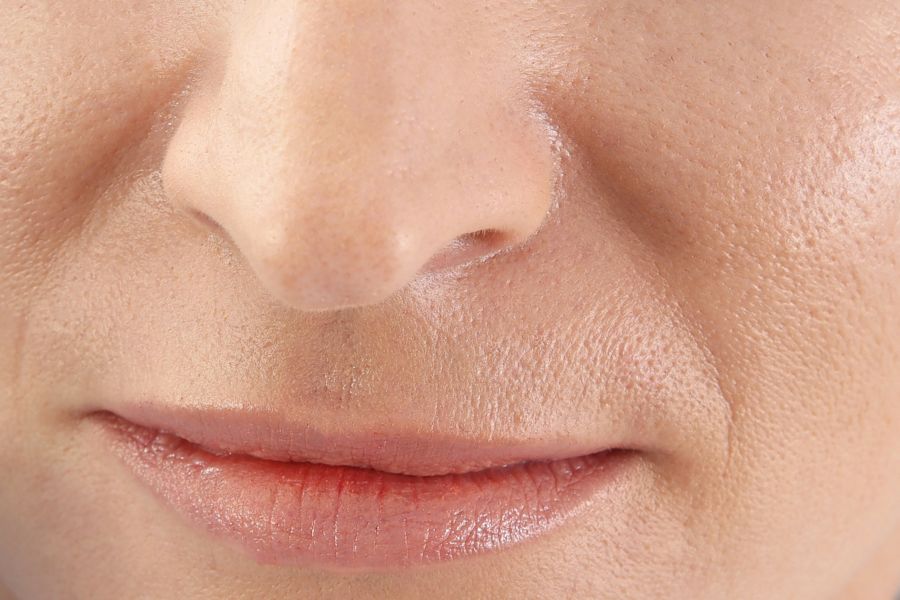
Causes
Nasolabial folds can form due to aging, facial expressions, or natural bone structure.
1. Dented nasal base / convex mouth
Dented nasal base and convex mouth are the main culprits behind nasolabial folds. The depth of the folds depends on the height difference between the nose and mouth. Aging also contributes to deeper nasolabial folds by causing bone and soft tissue loss.
2. Skin sagging with aging
As we age, our skin sags due to losing collagen, water, and fat content. Weak fascia can’t hold the fat pad, causing it to hang down and form nasolabial folds. This is a sign of aging, not Osteoporosis.
3. Repetitive facial expression
Facial movements can cause wrinkles. If you smile a lot or make big facial movements, you can develop static nasolabial folds. Over time, laughing or pursing your lips can deepen these folds. Check if your nasolabial fold extends from the side of your nose to your mouth corner or below your mouth.
4. Air pollution, radiation from electronic devices and unhealthy lifestyle
Air pollution, electronic devices, and unhealthy lifestyle can accelerate skin aging. Metallic dust in the air creates free radicals under UV light exposure. Free radicals on the skin cause dull and uneven skin tone. Sunlight radiation can cause yellowing on the skin, reduce tissue cells, and cause fine lines and dry skin. Similarly, electronic devices attract charged dust and dirt, accelerating skin aging. An unhealthy lifestyle also accelerates skin aging and formation of nasolabial folds.
5. Sleeping positions
Sleeping in certain positions can cause lines on the face, known as sleep wrinkles. They are caused by the pressure and movements on the face during sleep, not by facial expressions.
6. Lost weight too rapidly
Rapid weight loss can cause nasolabial folds due to collagen loss, resulting in skin sagging.
Symptoms
The nasolabial line is a curve that runs from the edge of the nose to the corner of the mouth.

Treatment
The nasolabial fold is a common sign of aging on the face that is challenging to remove. Skinspire Laser & Skin Clinic suggests the following treatments.
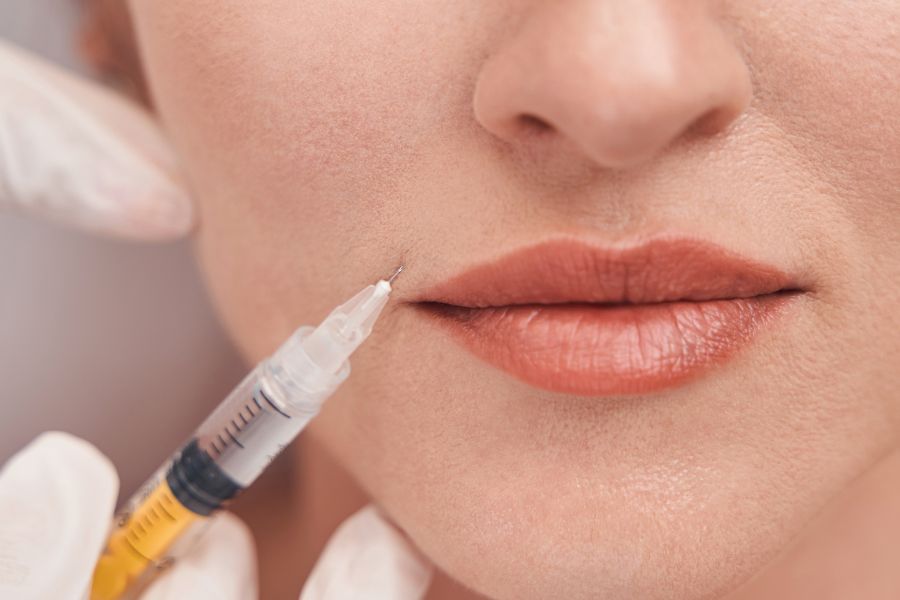
Hyaluronic acid offered by Skinspire Laser&Skin Clinic, is a natural substance found in tissues. It can be used as a filler in aesthetic treatments by injecting it into the skin to fill wrinkles or enhance facial features. There are no side effects, as it is naturally metabolized by the body. Repeated treatments are safe and offer long term results.
How does Hyaluronic Acid Dermal Filler work
Medium molecular weight hyaluronic acid is injected into the skin to smooth nasolabial folds, the dented area at the outermost wings of the nose, and corners of the mouth. This treatment helps plump the nasal base and smooth wrinkles, providing an instant effect of face rejuvenation.
Procedure
- 1. Face-to-face consultation: Skinspire Laser&Skin Clinic provider will determine treatment areas and dosage according to the client’s bone and face structure.
- 2. Pre-treatment preparation: Skinspire Laser&Skin Clinic provider will clean and disinfect the injection areas, confirm the injection solution has not been opened.
- 3. Injection: Skinspire Laser&Skin Clinic provider will Inject hyaluronic acid at the assigned areas, massage the injection areas while injecting to smooth the lines evenly.
- 4. Post-treatment care.
Who is it for
- People who have nasolabial folds caused by a dented nasal base
- People who have shown signs of aging, sagging face, or worsen nasolabial folds
- People who want to smooth and fill the nasolabial lines in a natural and quick manner
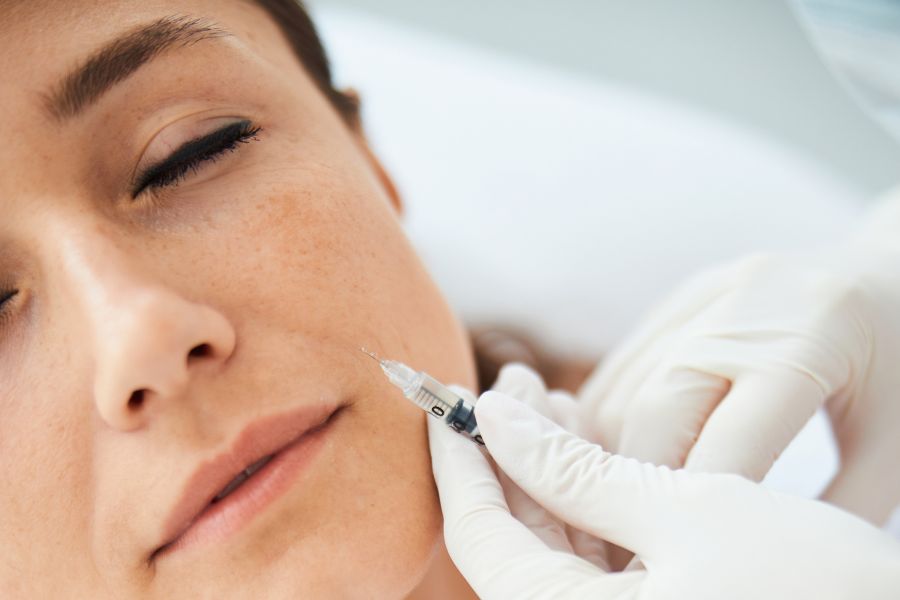
Botulinum toxin offered by Skinspire Laser&Skin Clinic, can temporarily relax muscles by blocking nerve signals, resulting in smoother nasolabial folds. This treatment is effective for dynamic wrinkles.
How does Botulinum Toxin work
Botulinum Toxin can weaken the muscles in the upper lip and nose area, helping to smooth out the wrinkles. It can be used in combination with Dermal Fillers.
Procedure
- 1. Face-to-face consultation: Skinspire Laser&Skin Clinic provider will determine treatment areas and dosage according to the client’s bone and face structure.
- 2. Pre-treatment preparation: Skinspire Laser&Skin Clinic provider will clean and disinfect the injection areas, confirm the injection solution has not been opened.
- 3. Injection: Skinspire Laser&Skin Clinic provider will Inject hyaluronic acid at the assigned areas, massage the injection areas while injecting to smooth the lines evenly.
- 4. Post-treatment care.
Who is it for
- People who have developed early dynamic nasolabial folds due to over facial movement/expression
- People who want to smooth and fill the nasolabial lines in a natural and quick manner
- People who want to eliminate both dynamic and static nasolabial folds with hyaluronic acid
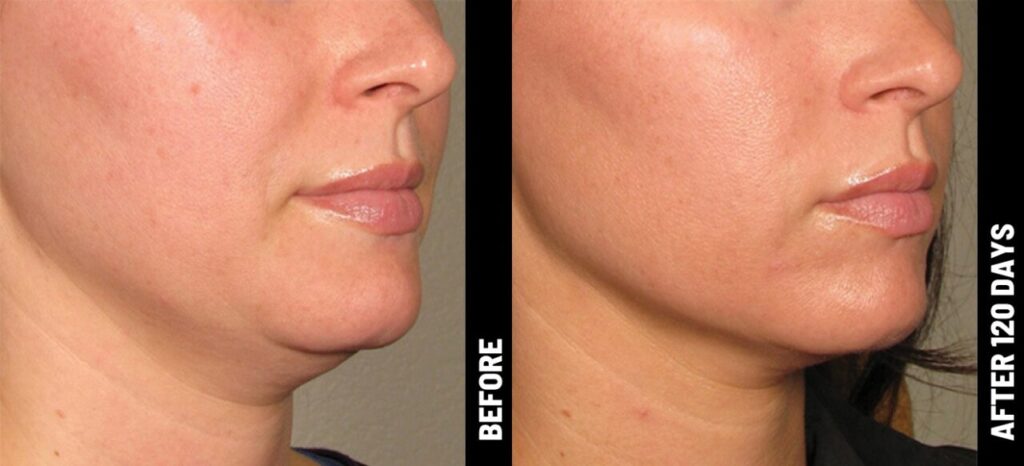
Ultherapy offered by Skinspire Laser&Skin Clinic, is a non-surgical treatment that uses ultrasound to rejuvenate the skin by tightening, increasing elasticity, lifting, reducing wrinkles, whitening, and improving pigmentation. It can also reduce fat deposits on the face and neck, resulting in well-defined facial contours and the elimination of double chins.
How does Ultherapy work
Ultherapy engages precise ultrasonic energy to go 4.5MM, 3.0MM and/or 1.5MM skin deep, triggering cellular friction to generate high heating energy at pinpointed thermal focal points. The heat generated at these focal points will stimulate tissue self-renewal mechanism, collagen regrowth, and an increase in collagen fiber and elastic fiber. Provide instant reverse of aging signs.
Procedure
- 1. Face-to-face consultation: Skinspire Laser&Skin Clinic provider will suggest treatment plan based on client’s condition and expectation.
- 2. Anesthetic: Skinspire Laser&Skin Clinic provider will apply Anesthetic externally. Clean and disinfect the treatment areas.
- 3. Pre-treatment preparation: Skinspire Laser&Skin Clinic provider will draw markings on the face to define treatment areas, adjust treatment parameters based on the client’s signs of aging on the face.
- 4. During treatment: Skinspire Laser&Skin Clinic provider will perform the Ultherapy treatment. Focus on the areas of the double chin and the jawline.
- 5. Post-treatment repair: Medical-grade facial repair mask + QDEL Phototherapy mask to nourish and repair the skin.
- 6. Post-treatment caring.
Who is it for
- People who have shown severe aging nasolabial folds
- People who have deep nasolabial folds due to face sagging
- People who want to eliminate nasolabial folds and remove wrinkles/lines in the long run
- People who have shown signs of aging and deep nasolabial folds
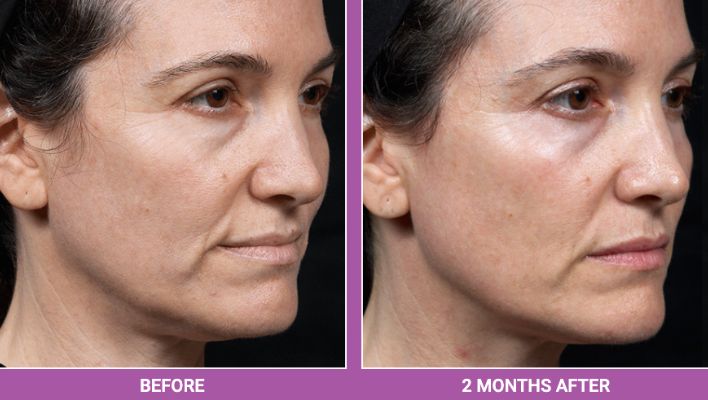
Thermage offered by Skinspire Laser&Skin Clinic, utilizes radiofrequency to heat and damage the dermis layer, stimulating the skin’s self-healing process. This results in tighter, smoother, and lifted skin, with a face slimming effect similar to Ultherapy.
How does Thermage work
Thermage uses radiofrequency to heat the dermis layer of your skin to 65℃ ~ 75℃. This stimulates a self-repair mechanism, producing more collagen and resulting in instant firming.
Procedure
- 1. Face-to-face consultation: Confirmation of a detailed plan of Thermage by Skinspire Laser&Skin Clinic provider after fully understanding the client’s conditions and desired results.
- 2. Pre-treatment preparation: Skinspire Laser&Skin Clinic provider will clean and disinfect the treatment areas, draw treatment areas on the face, confirm the package of the new tip of the applicator has not been opened.
- 3. During treatment: Skinspire Laser&Skin Clinic provider will proceed with the treatment based on the assigned treatment areas to remove wrinkles and tighten skin.
- 4. Post-treatment repair: QDEL Phototherapy mask to nourish and repair the skin.
- 5. Post-treatment caring.
Who is it for
- People who have severe aging nasolabial folds
- People who have deep nasolabial folds due to face sagging
- People who have experienced disappointing results from injection treatments and shown repeated appearance of lines
- People who have shown signs of aging and deep nasolabial folds
- People who do not rush into immediate results and are looking for long term treatment with sufficient financial support
- People who want to eliminate nasolabial folds and remove wrinkles/lines in the long run
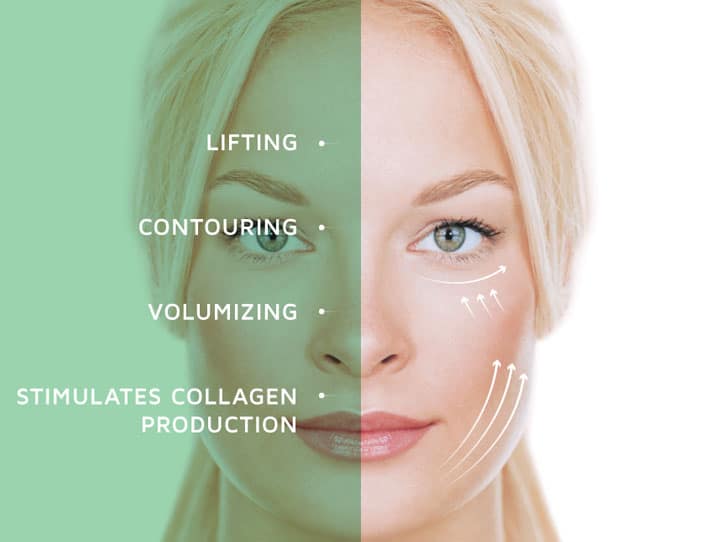
Thread lift offered by Skinspire Laser&Skin Clinic, is a highly effective face lifting technique. It uses threads in the dermis layer to lift the face by stimulating the skin and collagen production. It can restore the skin’s lifting ability and prevent sagging. By embedding threads in a big V shape, the face shape can be instantly lifted and result in a slimmer face.
How does Thread Lift work
Thread lift treatment uses threads embedded in the skin to stimulate collagen regeneration, resulting in a youthful look. This unique treatment plan is customized for each client based on their condition and expectations. It can also lift drooping skin to produce a firmer face.
Procedure
- 1. Face-to-face consultation: Skinspire Laser&Skin Clinic will develop a unique treatment plan based on the client’s condition and desired results.
- 2. Apply anesthetic: Skinspire Laser&Skin Clinic will apply anesthetic externally, clean and disinfect the areas to be embedded with threads.
- 3. Pre-treatment: Skinspire Laser&Skin Clinic provider will check the quality and quantity of the threads.
- 4. During treatment: Skinspire Laser&Skin Clinic provider will proceed with the treatment plan to embed threads.
- 5. Post-treatment precautions.
Who is it for
- People with nasolabial folds due to dented nasal base
- People who have shown signs of aging, sagging face, or worsen nasolabial folds
- People who want to smooth and fill nasolabial folds with hyaluronic acid
- People who want to smooth and fill the nasolabial lines in a natural and quick manner
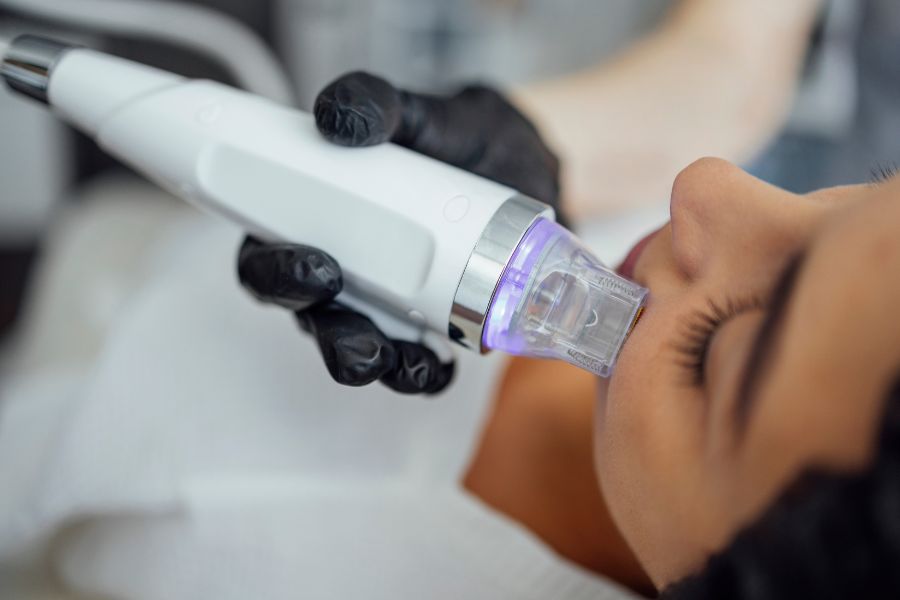
RF Microneedling offered by Skinspire Laser&Skin Clinic, is an innovative treatment that uses radio frequency and microneedling technology. Fine needles create tiny punctures in the skin, and RF energy is delivered to the dermis to produce new collagen and elastin. It can improve skin texture, firmness, and resurfacing.
How does Radiofrequency (RF) Microneedling Laser work
A sterile tip with gold-plated microneedles is used to stimulate skin healing. Microneedles are inserted into the skin, transmitting high frequency energy. The energy heats collagen fibres, damaging sebaceous glands and killing acne-causing bacteria. This reduces pore size, controls oil secretion, and improves acne.
Procedure
- 1. Skin Test: Skinspire Laser&Skin Clinic provider will provide a skin test to access skin condition or existing skin problems.
- 2. Face-to-face consultation: Skinspire Laser&Skin Clinic provider will develop unique treatment plan based on client’s condition and desired results.
- 3. Apply anesthetic: Skinspire Laser&Skin Clinic provider will apply anesthetic externally. Clean and disinfect the treatment areas.
- 4. Pre-treatment preparation: Skinspire Laser&Skin Clinic provider will draw markings on the face to define treatment areas, confirm the package of the new tip of the applicator has not been opened.
- 5. During the treatment: Skinspire Laser&Skin Clinic provider will perform the treatment as planned, precisely adjust the RF energy output and depth.
- 6. Post-treatment repair: Medical-grade facial repair mask + QDEL phototherapy mask to nourish and repair the skin.
- 7. Post-treatment care.
Who is it for
- People who have shown early sign of nasolabial folds or who want to slow down the formation of nasolabial folds
- People who have shown signs of aging, sagging face, or worsen nasolabial folds
- People who do not rush into immediate results but want to improve the skin texture and firmness
- People who want daily skin conditioning, and gradually remove nasolabial folds
